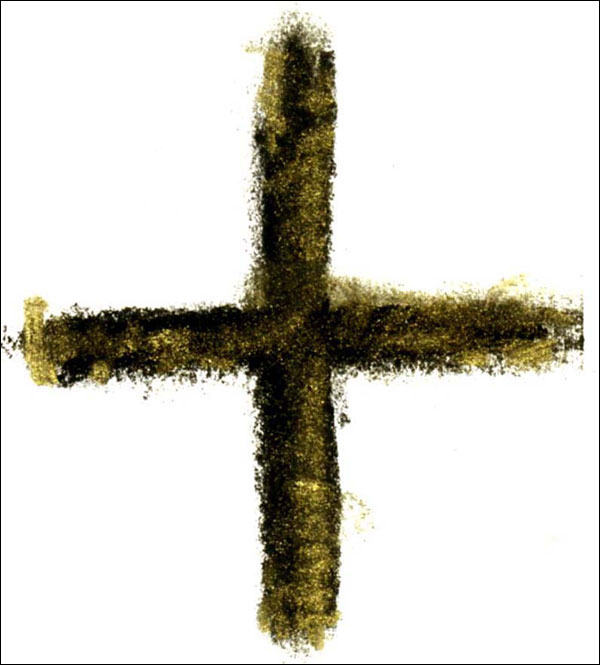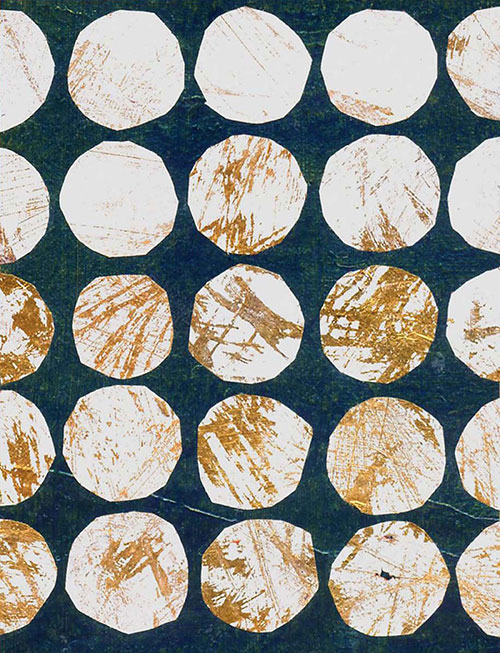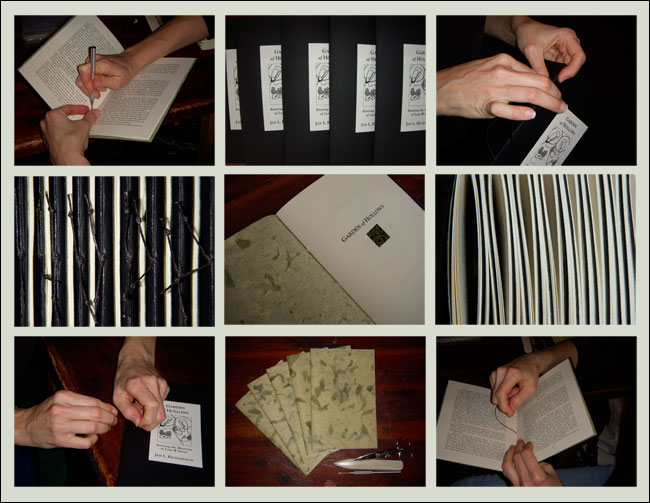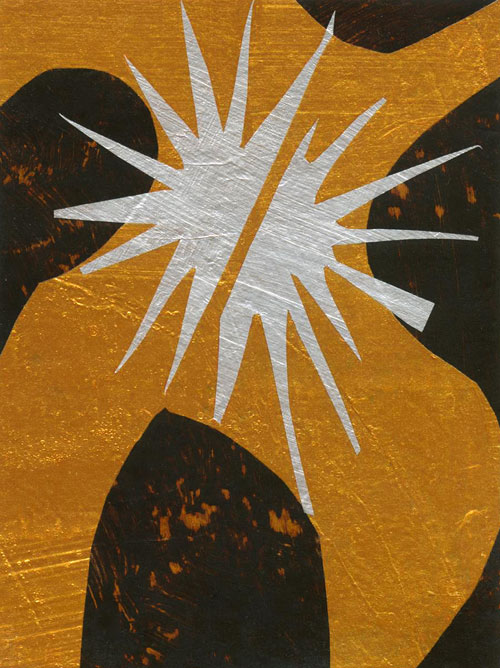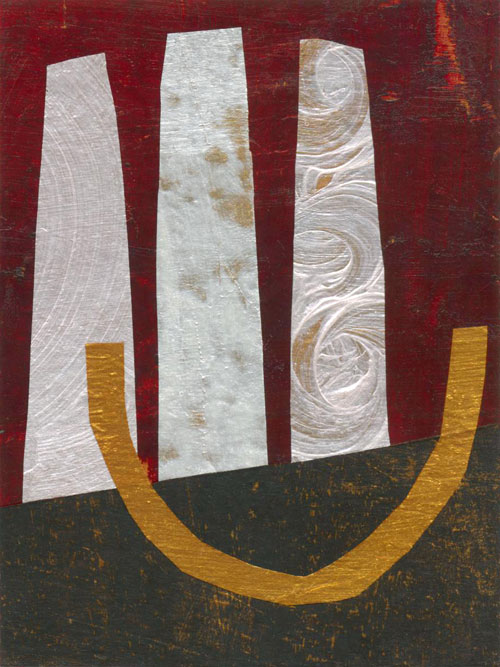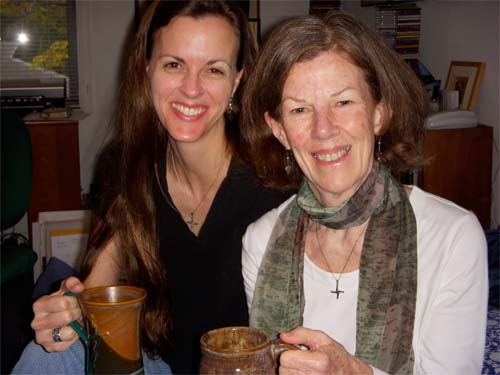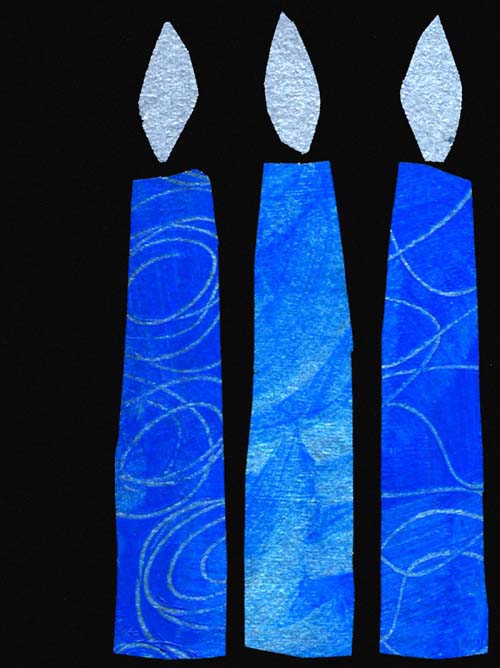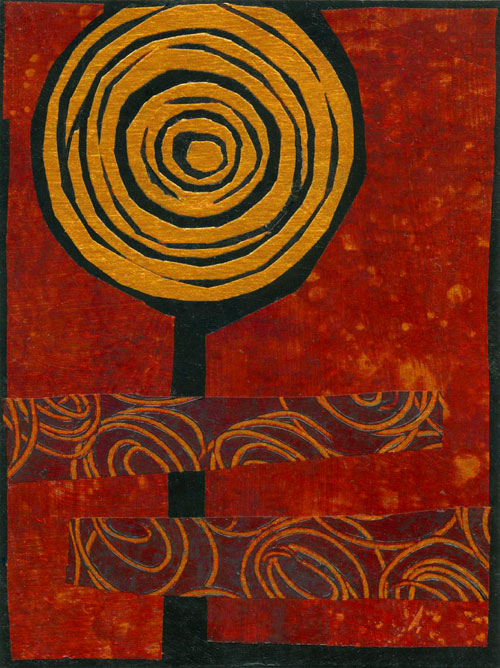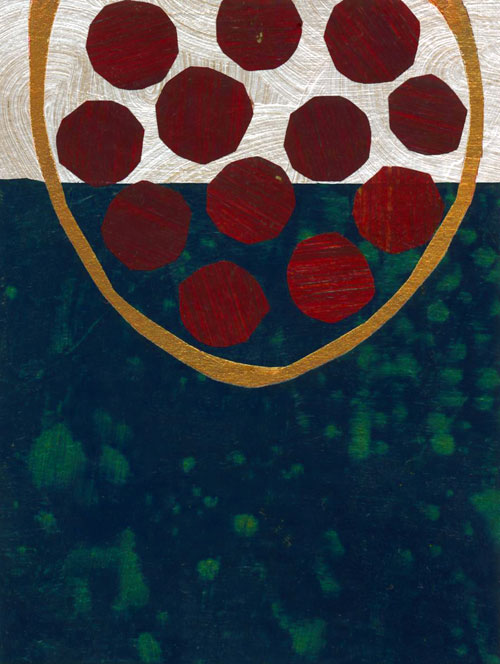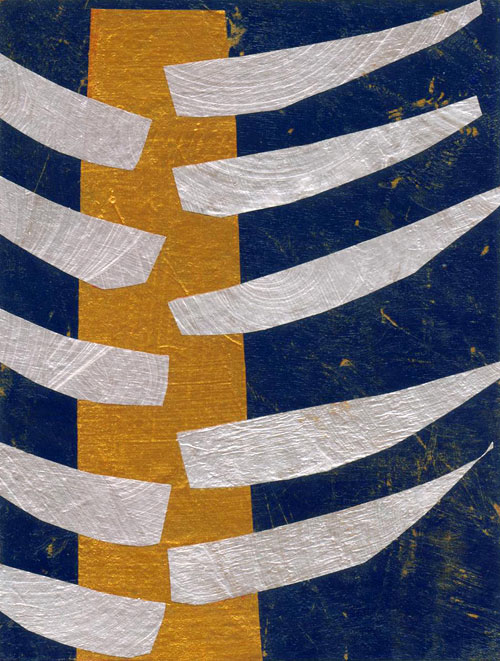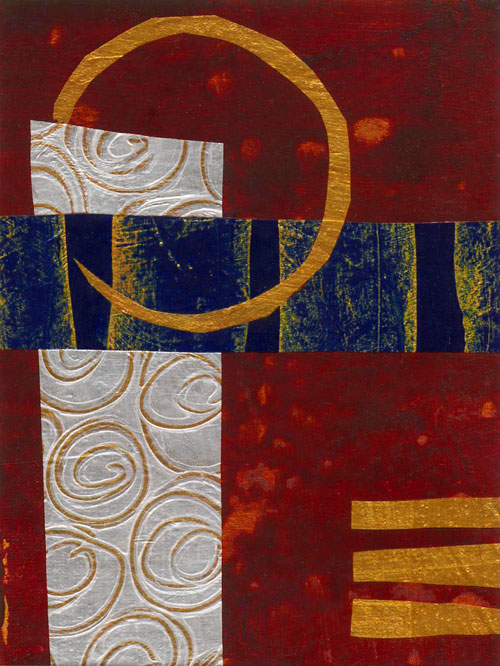 Image: A River Runs through Him © Jan Richardson
Image: A River Runs through Him © Jan Richardson
Reading from the Gospels, Lent 1, Year B: Mark 1.9-15
Well, it doesn’t get much more basic, does it? A man. A wilderness. A few wild beasts for company. And, in Matthew and Luke’s telling of it, no food.
Forty days.
Jesus has just been baptized, just been Holy-Spirit-descended-upon, just been named Son and Beloved. One might think he is now raring to begin his ministry (or what have the past three decades been for?). Instead he goes in the opposite direction. Into the wild. He disappears into the desert as his Jordan-drenched flesh goes dry.
I wonder if, as he settled into that landscape, Jesus thought of those who preceded him in the wilderness. I wonder if he went through the list in his head, remembering his forebears who entered into those betwixt places, the spaces that lay between where they had been and where they were going, between the life they had known and the life they could barely envision. Every morning when he woke up, did he utter a liminal litany?
Hagar
cast into the wilderness with her young son
Jacob
on the run from his brother
Moses and Miriam and Aaron
and all the children of Israel
wandering but delivered from their bondage
Elijah
fleeing for his life from queen Jezebel
Jesus was in good company. The wilderness may be a place of solitude, but it is at the same time a mythic place, imprinted by all who have inhabited it for a little or a longer while. It breathes with the memories of those who found themselves there by accident or intent, who fled there for safety or who entered it in search of what they could not find elsewhere.
In his desert sojourn, did Jesus ever wish for the wellspring that the angel revealed to Hagar in the wilderness, when her son was on the point of death? Did he pray for a vision, a dream like Jacob’s to direct and sustain him? Did he start hungering for the manna that nourished the Israelites in their journey? (And did those wild beasts that Mark mentions start looking tasty to him?)
Did the question that came to Elijah (traveling for forty days and forty nights in the strength of the angel-borne food) come also to him:
What are you doing here?
That’s the question that the desert gives us, isn’t it? What are we doing here? Not just: what are you doing here in this physical place, but also: what are you doing here in this life?
Sometimes it takes going into the wilderness, of body or of soul, to find the answer to this question. Traveling toward where the familiar contours of our lives disappear. Leaving the landmarks behind, the people and patterns and possessions that orient us.
That’s where Jesus goes. Surfacing from the waters of his baptism, he doesn’t fling himself into his ministry, doesn’t take up his work among the community that will meet him with both belief and betrayal. He first goes into the place where everything is stripped away, and he confronts the basic questions about who he is and what he is doing.
We don’t know precisely what it is that Jesus learns there, what he comes to know about himself in that Forty Day Place. We do know that when Satan shows up, Jesus is ready. What Mark hints at in his version, Matthew and Luke describe more fully: Jesus meets the chaos of his tempter with clarity. The baptismal waters may have evaporated from his skin, but not from his soul. A river of knowing runs through him. He is drenched with discernment.
Beloved. Son.
This is what he knows.
When Jesus leaves the wilderness, he takes this clarity with him as a treasure of the desert, a sign of the sustenance that always comes to those who survive that landscape. Baptized in the Spirit, named by the Creator, attended by the angels, Jesus walks out of the desert and into the life that has been prepared for him. He is an initiate, ready, going in the company of all who know what it means to walk through the wilderness and find the gifts God hides there. Perhaps he carries their names on his lips as he crosses back into the community, prepared to proclaim the good news; perhaps those names pound in him like a heartbeat, or rush in his ears like the sound of an ancient river:
Hagar, Jacob, Moses, Miriam, Aaron, Elijah…
So what are you doing here? At the outset of the Lenten journey, why are you where you are? What do you need from the Forty Day Place that this season offers? Is there a wilderness you need to enter—with your body or with your soul or with both—in order to gain clarity at this point in your life? What might that look like? Whose stories could you draw on, lean on, take heart from, as you contemplate this?
As you travel into this Lenten landscape, may you find what you most need, may you receive the gift you never expected, may you find strength in those who have journeyed there before you, and may angels attend your way. Blessings.
[For last year’s reflection on Matthew’s version of this story, visit Discernment and Dessert in the Desert.]
[To use the image “A River Runs through Him,” please visit this page at janrichardsonimages.com. Your use of janrichardsonimages.com helps make the ministry of The Painted Prayerbook possible. Thank you!
Resources for the season: Looking toward Lent
